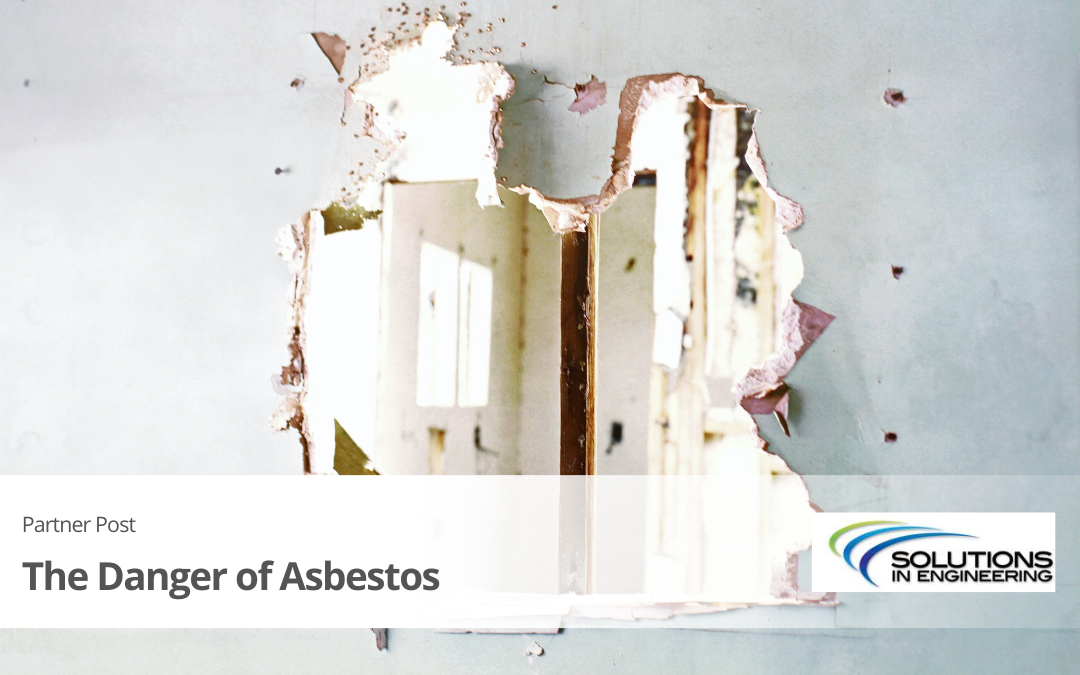Are you aware of Asbestos at your property? This month, Solutions In Engineering share the importance of ensure your asbestos register is up to date.
We recently took a distressed call from a Body Corporate Manager who informed us that they had a health disaster unfolding at a Body Corporate on a Friday afternoon.
The Issue: A tradesman had commenced work on common property at a strata scheme and had drilled through an internal wall on common property. Unbeknownst to the tradesman or perhaps naively, he failed to think about what the material the wall was made of.
The Problem: Moments later, most of the wall exploded out into the corridor in a puff of powdery fibres, and it was only then that the tradesman began to worry. The age of the building dated it back to the 1970s, a period when Asbestos was one of the most widely used products, prized for its waterproof and fire-resistant qualities. Unfortunately this product has since been linked to around 200,000 deaths each year globally. ACM (Asbestos Containing materials) were finally banned from use in Australia in any form (including secondary products) 31 December 2003, legislation around the management and identification of ACM became very prevalent when the Model WHS Legislation 2011 was introduced in 2012.
Unfortunately, many building owners chose to ignore the legislative requirement. Resulting in a failure to have completed an asbestos survey and, if ACM is deemed to be present a register must be created. The register must be always kept onsite and be made available for viewing by anyone undertaking work. It was legislated that these surveys and registers be completed to assist anyone working or living onsite identify where there may be ACM and then how best to go about their task.
Under the WHS 2011, it is a requirement that building owners and those with management responsibilities of a building built prior to 1990 (QLD) undertake an Asbestos Survey and prepare an Asbestos Management Plan plus the Onsite Asbestos Register if ACM is identified onsite.
This Body Corporate was now in a very liable position! Both the building owners and the managers had failed to complete an Asbestos Survey and now they had a scenario in which all the building residents were exposed to an airborne carcinogenic (many residents walking it right into their units unknowingly). This is negligence and if proven in court both the building owners and the management company could be found liable.
The tradesman too should have known better. If an the Tradie is an employee, then his employer will be questioned over what training the tradesperson had received prior to attending site. What are the employers’ policies and procedures for staff attending to work on building sites where there is the possibility of ACM being located? Both the Tradie and his employer would be required to explain in court why he did not take greater precaution with a building of this age. In other words – “what did you do as far as is reasonably practicable, to minimise the risk of airborne asbestos exposure at this site?” In this case, the answer would be I did nothing to meet or exceed what is required under the Legislation and Australian Standards.
Our advice to the Strata Manager was to IMMEDIATELY treat the material as friable (airborne) Asbestos and get a qualified clean-up crew in straight away. We also strongly urged that they contact their insurer and inform them of the events that unfolded. Hopefully the insurer was able to fund the relocation of residents until this huge health hazard was remediated and made safe.
Residents in their 20s and 30s live in this scheme. The onset of asbestos related diseases such as mesothelioma is usually between 20 to 30 years. Because the owners also failed to comply with legislation around surveying for asbestos, it is also possible that the insurers will not cover any future lawsuits that arise from residents and visitors being exposed this fateful Friday afternoon.
Sound harsh? Not really it is just like driving a car on the road, your insurance becomes null and void the moment you fail to comply with legislative requirements i.e. driving whilst intoxicated, correct tires, speeding. Insurance is to cover your loss if something goes wrong that you had no control over happening. So please, for all schemes you manage or are on the committee for that were built prior to 1900 in Qld (or 2003 in all other states) ensure that they have had an Asbestos Survey done. If it is deemed that ACM is present, then they MUST have this reviewed at least every 5 years until such time as all ACM has been removed. So at least every 5 years you should be putting up a Motion to have the review undertaken.
